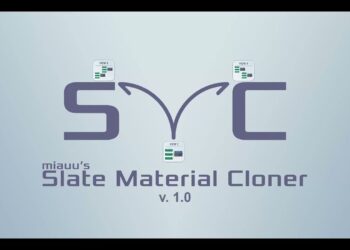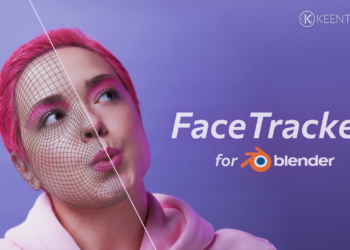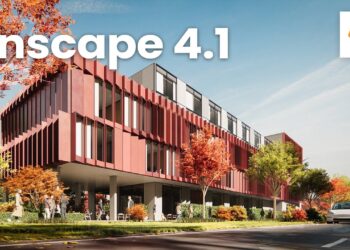Avid held their Softimage XSI 1.5 launch event last night at the Museum of Flying in Santa Monica, CA. The Good: Free beer, impressive poly modeling tools, open ascii file format, animation signal processing in their animation mixer – The Bad: I think a piece of bad fish nearly poisoned me last night, all rendering is very tightly tied to Mental Image$ with no apparent support for other 3rd party renderers. Overall, as a package, XSI is looking pretty nice – good workflow, competitive toolset – but there is a sense that they are desperately trying to regain market share in a community they’ve lost touch with. Given a little more time and 3rd party support, I think XSI is going to become very attractive.
Martin Foster wrote up a really good review of the show and posted it up on the Max Webboard – I’ve reproduced it here for everyone’s convenience….
“Last night, I went to the Santa Monica, CA, USA launch of SoftXSI. Hoping to see some friends, get some free food and drink, and maybe even learn something about the software. I did bump into Jack Walsh, Evan Ricks, and Scott Kirvan. Pretty much spent the entire evening talking about rendering and production with Scott. I had a great time. The food was really disappointing but they had a free bar.
It was definitely not full, compared to the Maya launches I’d attended at the same venue. It was perhaps 2/3 full, so I got the impression there was some disinterest in the feature film community since I didn’t see many folks from big studios. This is surprising since Santa Monica is in the heart of the new “Hollywood by the Sea” where most big and small studios have moved. I’m sure the SoftXSI/IRIX debacle has lost them tons of business from the “big boys”. The people I did meet that I knew where mainly in the post-production/boutique visual effects business where NT has gained some acceptance.
So onto the demo. It was pretty good in some areas and very much only “catching up” in others. For example, to compete with MAX and Maya or just implementing stuff that was in Soft3d for ages and finally moving it over to XSI. However, the same thing happened with Max and Maya, it’s just that XSI got a really late start.
I was especially impressed with the polygon modeling and sub-div rendering which are somewhat more advanced than max4. More in the realm of Mirai in terms of workflow and tools. The sub-div rendering isn’t at the PRMan level but it was superior to max4’s because it incorporates view-dependent tesselation, from what I heard. That means only the necessary tesselation occurs for a particular framing or relative screen size. MAX4’s subdivs use explicit tesselation regardless of whether the object is even in the camera view!!!
Even though I’m not convinced MR2 is a good general purpose renderer because of speed, the integration with XSI and their IPR (Interactive Photorealistic Renderer) seemed way beyond Maya or max’s IPR’s.
The node tree shader editor looks really powerful. The proof that it is usable in actual production is available on http://www.highend3d.com where you can download free MR2 shaders that users have created for XSI. It’s small potatoes compared to the PRMan shaders available, but it’s significant compared to the Max/MR2 shaders. Sorry, I don’t think the XSI ones will work in max’s mental ray.
The animation mixer, termed NLA (Non-Linear Animation) was another of the strong areas. No surprise, since animation has always been Soft’s forte. There was some interesting analytical blending between animation clips. Motion mapping of mocap data between different characters looked good.
In the “catch up” category, they were very proud of having parametric primitives, which pretty much everybody has had for years starting with Prisms, then Houdini, then Max, then Maya. You could adjust the number of segments on a sphere, for example. Whoopee! (not). There were a few more controls than max4’s prims but nothing to lose bladder control over.
They also have some parametric modifiers, like “Twist”. Hmm, groundbreaking, eh? No.
The NURBS were also unremarkable. He showed off the ability to do curves-on-surface based on two intersecting surfaces. I believe that’s in most packages and was even in Soft3d (not certain about that).
The paint tools were fairly sophisticated from the little I saw and the UV mapping tools more user-friendly than max4’s but not necessarily up with Maya, at least with the paint paradigm.
The particle system had some interesting features. They called it a “full particle system”. I’m not sure what that means. Maybe Houdini would be full + 5, in that case. I really couldn’t assess the features based on the demo. Have to wait for my demo-CD.
What’s really missing is any connection to PRMan. Animal Logic support Soft3d with “SoftMan” but they haven’t seemed interested in an XSI version. In the biggest insult to my intelligence this year, the demo guy responded to my PRMan pipeline question by saying “we don’t think you need PRMan anymore, because it’s old”. And some other equally stupid remarks. No wonder very few film people bothered attending.
A Linux version of XSI was also mentioned but not demoed. AMD was the sponsor but the demo workstation was a “dual 1000” (Intel), ironically.
So it was a really mixed bag, IMHO. They had some impressive technology in areas they were already strong and some other areas were merely copies of competitors. Their main problems, I believe, is they have alienated much of their core market by releasing an unusable IRIX version and losing their PRMan pipeline. It remains to be seen if they can salvage their position and reputation with a robust Linux version. I’d love to see it happen because I don’t want Maya to become complacent.
Martin G Foster
Johnny on the Spot”







